I’d wager that the best business advice often ignored comes down to this, “You should write a strategic plan.” Stop procrastinating and just do it already! In this issue of the Best of DTS, you’ll find some practical tips to get you started.
Overwhelmed by the thought of it? Call us and we’ll assess exactly what kind of help you need to kick things off, or help you move from utterly lost to strategically sound.
This month we celebrate Veterans Day. As a veteran business owner, and veteran-advocate, I am continually impressed by the caliber of those who have served with pride, and the work they do after their military careers. I encourage other organizations to tap in to the talent pool of veteran employees.
Edward Tuorinsky
Managing Principal
David T. Scott & Associates, LLC
571.403.1841
5 Signs That You Need A Strategic Plan
 Not every organization is planning offsites and drafting a vision statement, but should you? DTS’s own Ed Tuorinsky has been making the media rounds, arguing that any organization wanting to be viable, fiscally healthy and results-oriented absolutely needs a strategic plan to guide decision making and set priorities for the next three to five years.
Not every organization is planning offsites and drafting a vision statement, but should you? DTS’s own Ed Tuorinsky has been making the media rounds, arguing that any organization wanting to be viable, fiscally healthy and results-oriented absolutely needs a strategic plan to guide decision making and set priorities for the next three to five years.
Assess yourself. You need strategic planning if…
- Your organization has no long-term plan for success
- There is no formal mission, vision or goals
- When team members are asked about the organization, answers vary or are vague
- Leadership does not or cannot track spending to company objectives
- The organization has evolved and is no longer a one-person show
Take the next step and brush up on strategy plan basics with Strategic Planning 101: Creating A Roadmap For Your Organization.
Gathering the Goods: Preparing for Strategic Planning
 During the strategic planning process, information is gathered from many different sources in an attempt to develop a big picture of the organization. This includes the environment and experience of the organization’s stakeholders, any current or past strategic plans, self-studies, fact books, print or electronic promotional materials, enrollment or subscriptions, marketing, fundraising and financial analyses. While some of these materials exist, others may require pre-planning projects to gather input.
During the strategic planning process, information is gathered from many different sources in an attempt to develop a big picture of the organization. This includes the environment and experience of the organization’s stakeholders, any current or past strategic plans, self-studies, fact books, print or electronic promotional materials, enrollment or subscriptions, marketing, fundraising and financial analyses. While some of these materials exist, others may require pre-planning projects to gather input.
Those considering a strategic plan in the future may want to get started with:
- Community/constituents/stakeholder input sessions
- Conducting an environmental scan to understand others operating in your same space and their tactics
- Conducting a SWOT analysis
At DTS, we also use a Rear-View Mirror (RVM) approach to look beyond the surface contract requirements and stated customer needs in order to guide project actions and better understand the “why.” Our RVM process considers:
» Organizational culture and values
» Management and staff motivations
» Institutional knowledge
» Executive/Legislative mandates and other governing motivations
Check out 50 more tips that can help you prepare and gather information.
Mind the Gap
Overcome the distance between organizational goals and harsh realities.
 Though your plan might get written with a management consultant or internal leadership team, it’s important to test your strategies with people in the real world, including others in the organization, stakeholders and customers. This critical step can highlight gaps or misalignments between the goals you want to achieve and resources you have to work with as well as your culture and environment.
Though your plan might get written with a management consultant or internal leadership team, it’s important to test your strategies with people in the real world, including others in the organization, stakeholders and customers. This critical step can highlight gaps or misalignments between the goals you want to achieve and resources you have to work with as well as your culture and environment.
For example, let’s say your goal is to go completely digital and your strategy is to roll out a new online system and backend software. On paper it looks good and you can afford to do it, but by talking to your training vendor, you learn that your current staff is lacking the tech skills they will need, and are so busy operating legacy processes, that training will require weeks off the job. That’s a pretty big gap.
Socializing strategies might not make all stakeholder happy (layoffs, for example) but actively looking to poke holes in your strategy, brings clarity on tactics, metrics and how you’re going to move forward. Ultimately, identifying gaps, pivoting and changing your strategy helps you build a better strategic plan.
Read more about How to Immediately Improve your Strategic Plan.
Recommended Reading

About DTS
DTS consultants go far beyond just “getting the job done.” We continually find better, more efficient and more effective ways to satisfy the needs of our public- and private- sector clients. DTS provides full lifecycle Management and IT consulting services, and can support your organization by researching and answering specific questions, solving critical issues or helping you plan for the future. Among a crowded field of contractors, DTS stands out for the quality of our people, the power of our approach, and the impact of our results. www.consultDTS.com
Continue the conversation:
Email sales@consultDTS.com or call 571.403.1841


